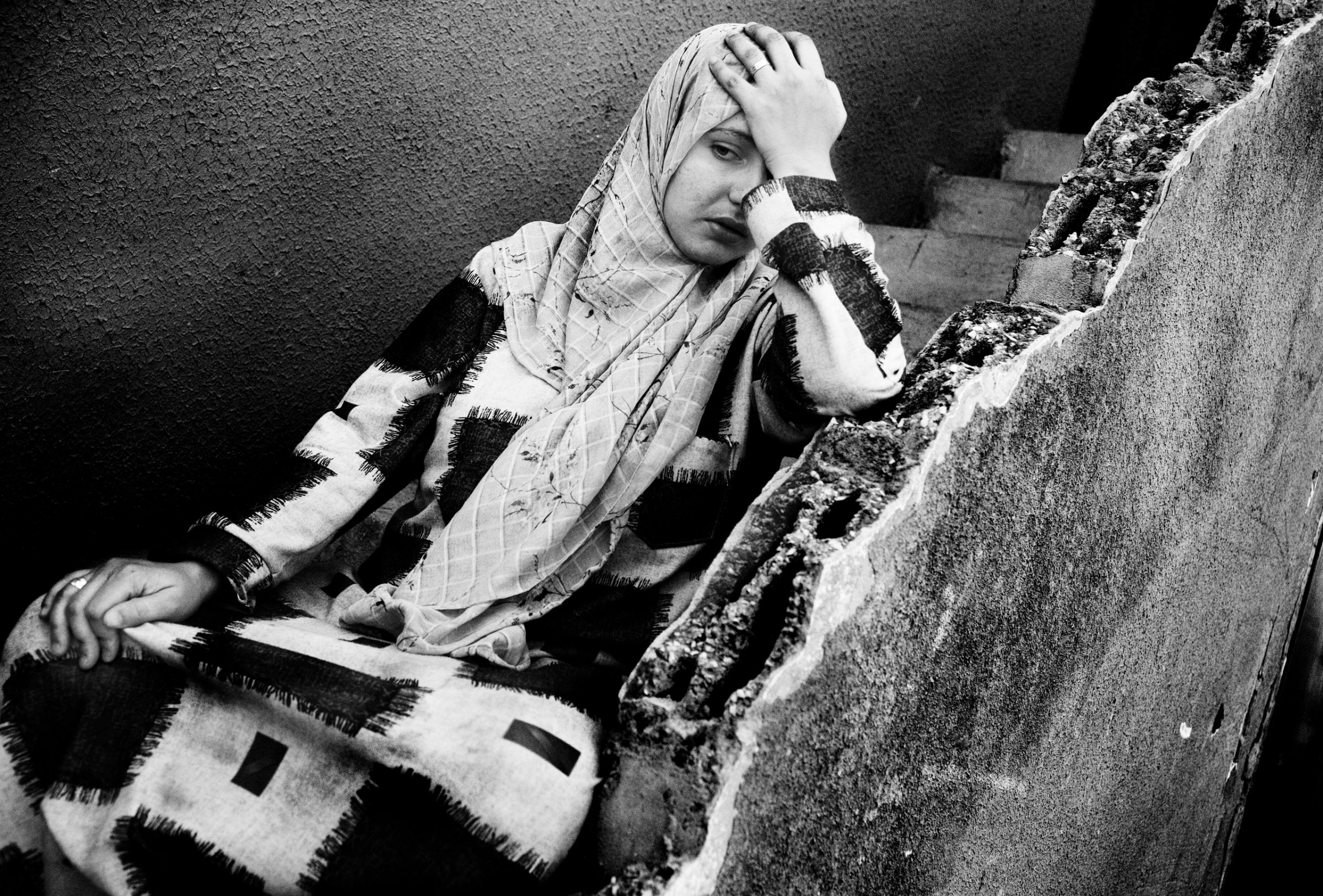
As war between Israel and Hizballah loomed 10 years ago, Israeli photographer Shaul Schwarz called looking for magazine support. Large numbers of his reservist friends in Israel were getting called up. His instincts were that this would be big. But, from the early months of 2003, the magazine’s main international story was Iraq. TIME had a team of writers, photographers, and Iraqi staff rotating in and out of a Baghdad bureau, and coverage of a new war threatened our resources. Some in the newsroom feared readers, fed up with never-ending conflicts in the Middle East, would turn away. But we knew that we had to cover this war and sent photographers to Lebanon and Israel.
Many war photographers had repeatedly risked their lives covering the post 9/11 conflicts. But by 2006, it had become too dangerous to work the streets in Afghanistan or Iraq. As American military embeds became the only safe way to access the story, many opted out, choosing Beirut as a safe haven and home. With fighting now on their doorstep, the Lebanese crisis offered a new opportunity to cover the fallout, this time independently.
The pictures that resulted captured a strong and undefeatable Israeli Army leaving battle, forlorn and distraught. Hizballah demonstrated that guerrilla warfare could effectively cripple a mighty military force. Though Lebanese deaths far outnumbered those of Israeli soldiers and civilians combined, this war was a turning point—leaving many in Israel feeling more disillusioned and vulnerable than ever before.
On the 10th anniversary of the conflict, TIME asked 18 photographers to select and reflect on the images they took:
Kate Brooks
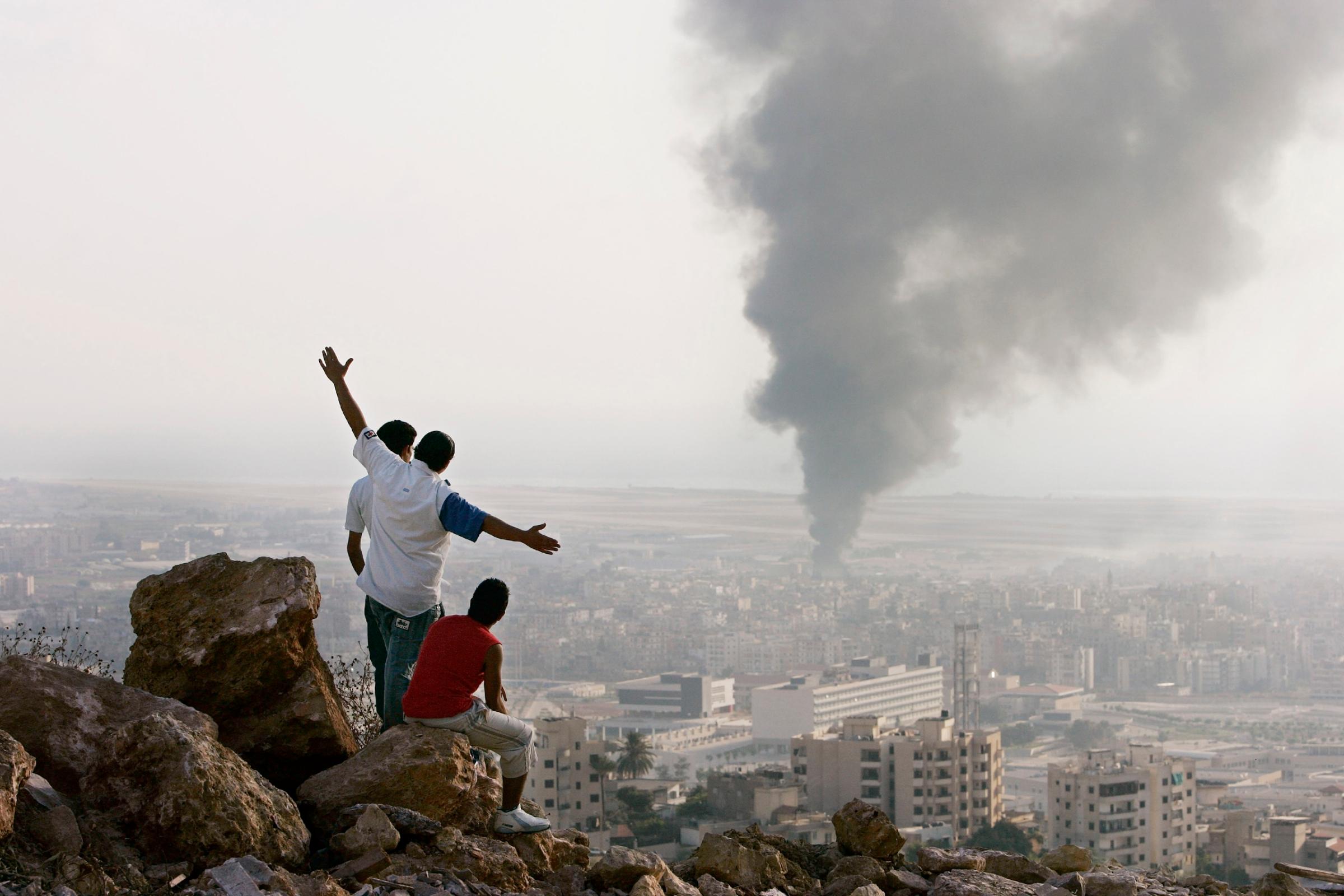
This was different from any other war. I lived in Beirut. For the first time in my life, I truly understood what it was to be a civilian caught in conflict, because I was one. Being in Lebanon wasn’t like being in Afghanistan or Iraq. I had no psychological protection, no place of safety to look forward to returning after my assignment. Day after day, Israel bombed infrastructure across the country, dropping massive bombs into densely populated urban neighborhoods just a couple of miles from my apartment.
Each time my body would grow tense and I would cover my ears. I even removed the windowpanes on one side of my flat for fear the glass would shatter. There was often no electricity or fuel for generator power. I resorted to buying truck batteries to power my computer. In the dark, I would listen to the news while transmitting my pictures to the outside world. In this photograph, Lebanese teens watch Israeli airstrikes from a hilltop overlooking Beirut at the start of the 2006 Lebanon War.
Spencer Platt
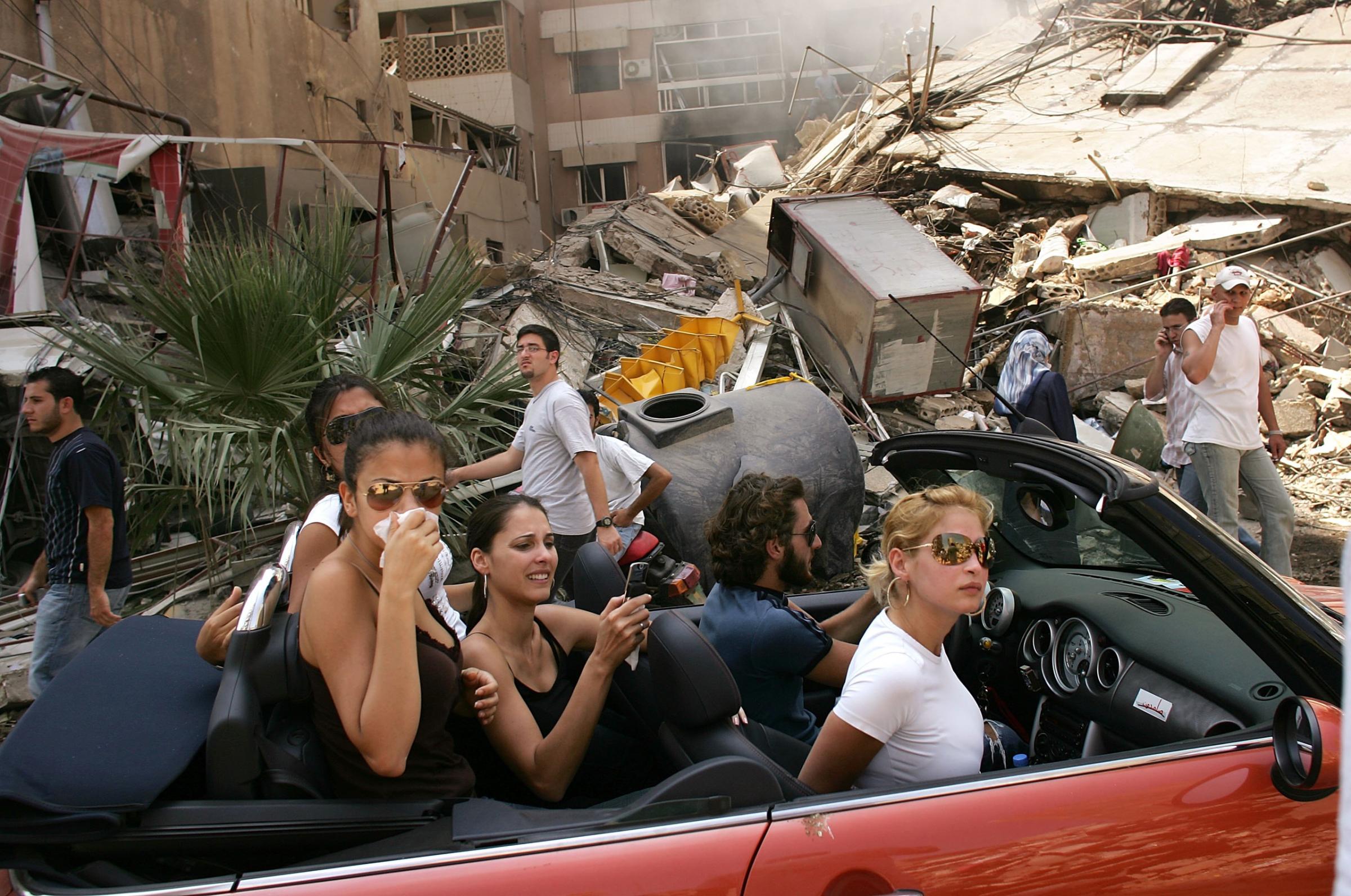
Like all images of conflict, I have mixed feelings about this picture I took in south Beirut in 2006. I see it every morning framed on a stark white wall in my Brooklyn apartment. The opaque nature of reality in the Middle East is captured in the image. The beautiful subjects in the red Mini Cooper driving through a devastated neighborhood took offense at how they were depicted. They falsely claimed to reporters that they were actually refugees. The way I was subsequently treated by numerous members of the media made me want to leave the profession and go someplace far away.
For me, this picture also stirs feelings of hopelessness for the region. War has developed a vicious tenacity in the Middle East. It seems to only get bloodier and darker with each passing year. News pictures are a hostage to time and place, liberating them from the fallout of what happens in the days and months after the click of the shutter.
Tyler Hicks
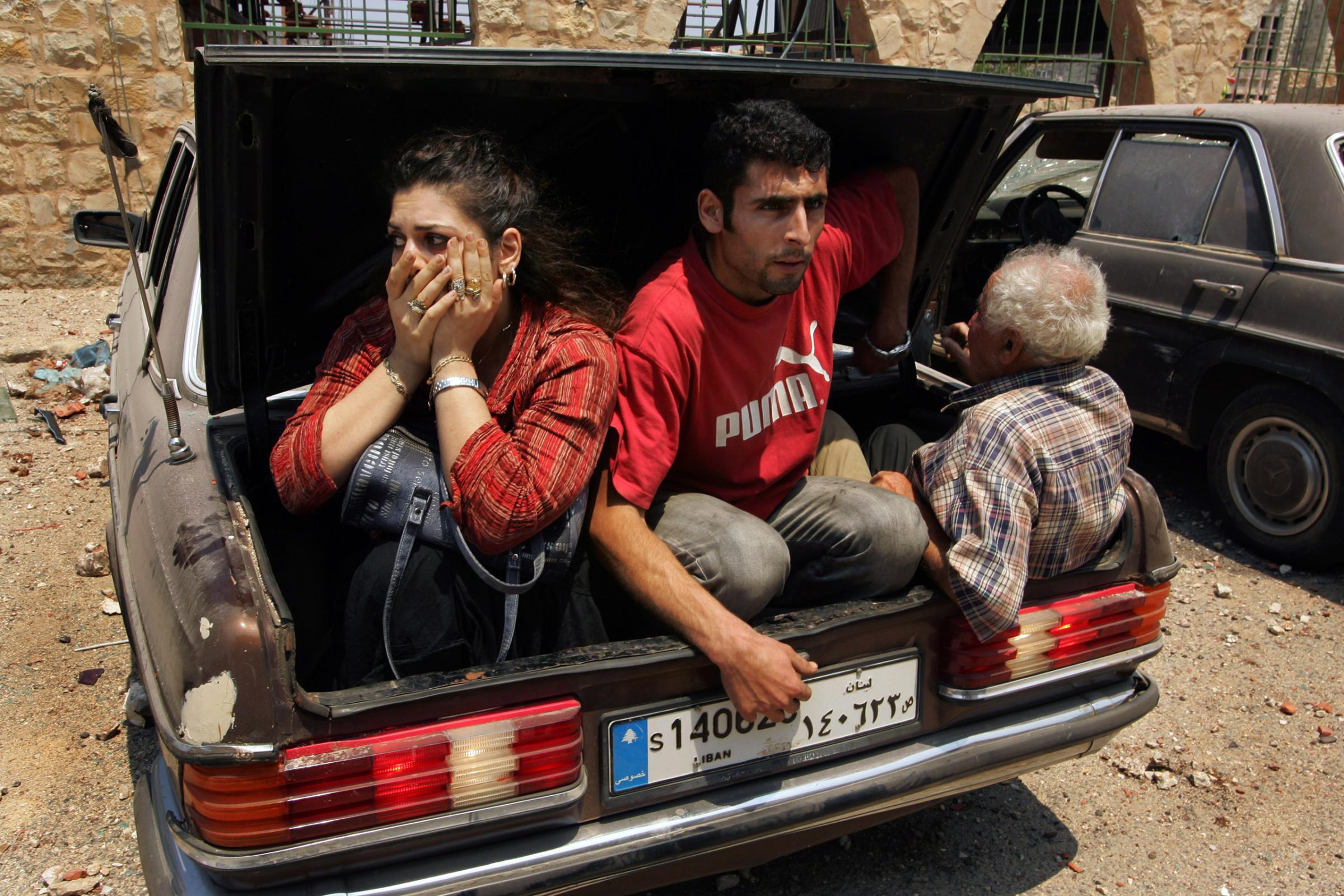
One of the things that stood out about the Israel-Lebanon War was the access that was possible. It felt like three wars going on, and there were photographers covering all three areas. From Israel, to the bombardments in the suburbs of Beirut, to the bombings that were happening in the south of Lebanon, where I was working. Because of that access, there were a lot of photographers, and that may have saturated an already weary audience from seeing another conflict.
These conflicts tend to go in cycles. Look at what has happened over the years in the Gaza Strip, or the prolonged wars in Iraq and Afghanistan, which are continuing in different ways today and have turned into different types of conflict. And of course Syria, Libya—these countries have become extremely difficult to work in.
The war in Lebanon was one of the last places I’ve worked where you could move freely and document the conflict from all sides. That is something we always strive for, and always hope for, and almost never have the luxury to do. In this photograph, residents of the village of Aitaroun, in southern Lebanon, take advantage of a temporary halt in Israeli airstrikes to flee, Aug. 2006.
Yoav Galai
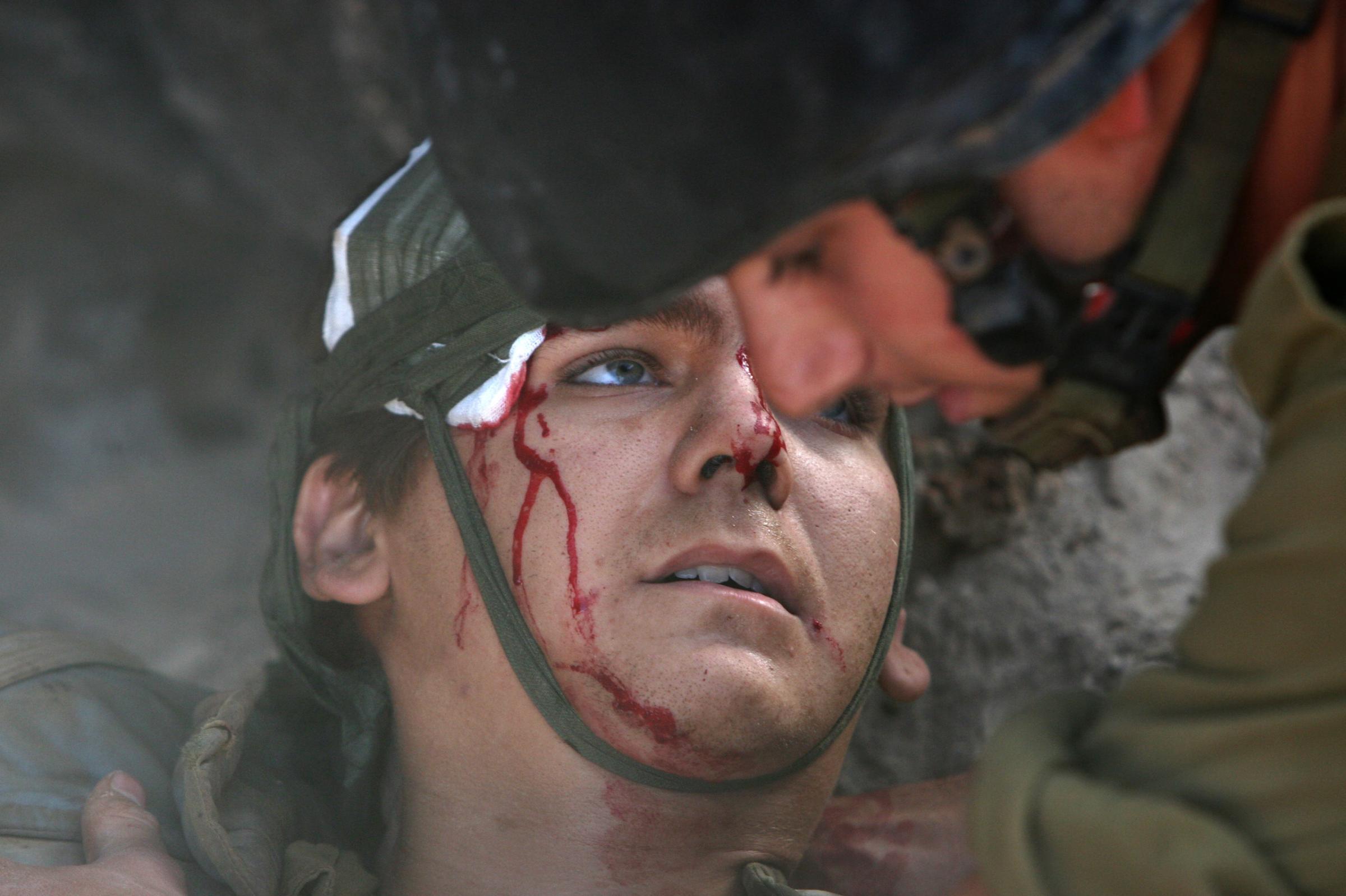
This image I took, as the only embedded photographer with the Israeli Defense Forces in Lebanon (IDF), depicts a classic “sacrifice” visual narrative of a hero giving his life for his nation. I was told by several people that it was ’very Vietnam’. Since this image was not overtly gruesome and since the soldier survived his injuries, it could be prominently displayed. I later learned that this scene actually represents a victim of a friendly fire incident, though it had already circulated and had been published with the caption that this soldier had been wounded in a Hezbollah attack. Because I insisted that information be included in the caption, the image lost value as a propaganda tool.
I have come to believe that embedded “war photography” simplifies the brutal ambiguity of conflict into well-worn and widely recognized visual templates. We, “war photographers,” help in reinforcing masculine myths of war as a purging experience. As it stands, I believe my images did a great disservice to the people who died or participated in this unnecessary and farcical demonstration of force in 2006, which besides claiming the lives of more than one hundred Israeli soldiers, also killed almost 30 times more Lebanese civilians than the 44 Israeli civilian dead. This conditioned Israeli public opinion to accept similar carnage in Gaza in 2009 and 2014 as a reasonable response.
Ghaith Abdul-Ahad

Abbas, a chubby young boy, sat on the side of narrow village road, held his injured mother’s hand and wept. “Don’t leave me, mother, don’t go, don’t go.” “Take care of your brothers and sisters,” the mother moaned softly, as her eyes closed leaving two white slits. A piece of shrapnel had cut into her chest and almost severed her right arm. Blood stained mother and child.
Abbas, his mother, brother, aunts and a grandmother, 18 in total, were cramped inside a small white minivan, fleeing their village in south Lebanon when an Israeli rocket pierced the roof of the car. Now the survivors were scattered on the road or in the shadow of a building crying, while inside the van lay the headless corpse of an uncle, a dead grandmother and a neighbor.
“Why are you leaving me,” Abbas started yelling at his mother, as her arm fell on the ground. He buried his face in his hands and wept. His brother, 12-year old Ali, stood on the other side of the mother, his hand bandaged and eyes staring into the horizon, as the Lebanese Red Cross started helping the survivors, July 2006.
Paolo Pellegrin
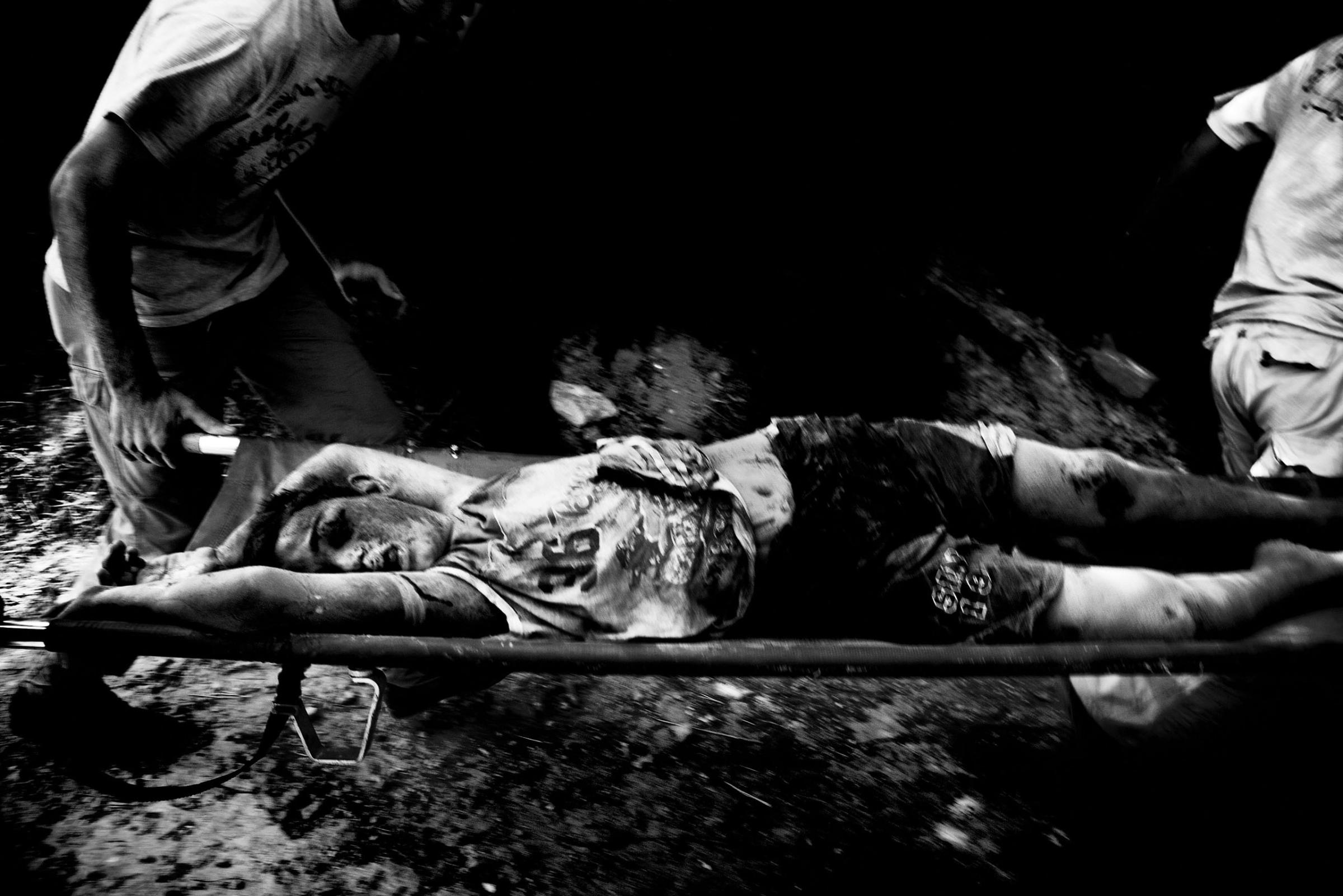
There’s no one
In the village
Not a human
Nor a stone
There’s no one
In the village
Children are gone
And a mother rocks
herself to sleep
Let it come down
Let her weep
The dead lay in strange shapes
Some stay buried
Others crawl free
Baby didn’t make it
Screaming debris
And a mother rocks
Herself to sleep
Let it come down
Let her weep
The dead lay in strange shapes
Limp little dolls
Caked in mud
Small, small hands
Found in the road
Their talking about
War aims
What a phrase
Bombs that fall
American made
The new middle east
The rice woman squeaks
The dead lay in strange shapes
Little bodies
Little bodies
Tied head and feet
Wrapped in plastic
Laid out in the street
The new middle east
The rice woman squeaks
The dead lay in strange shapes
Water to wine
Wine to blood
Ahh Qana
The miracle
Is love
“Qana” by Patti Smith
In this photograph, Qana, Lebanon, where 28 civilians were killed during an Israeli air strike in the early hours of July 30, 2006.
Davide Monteleone
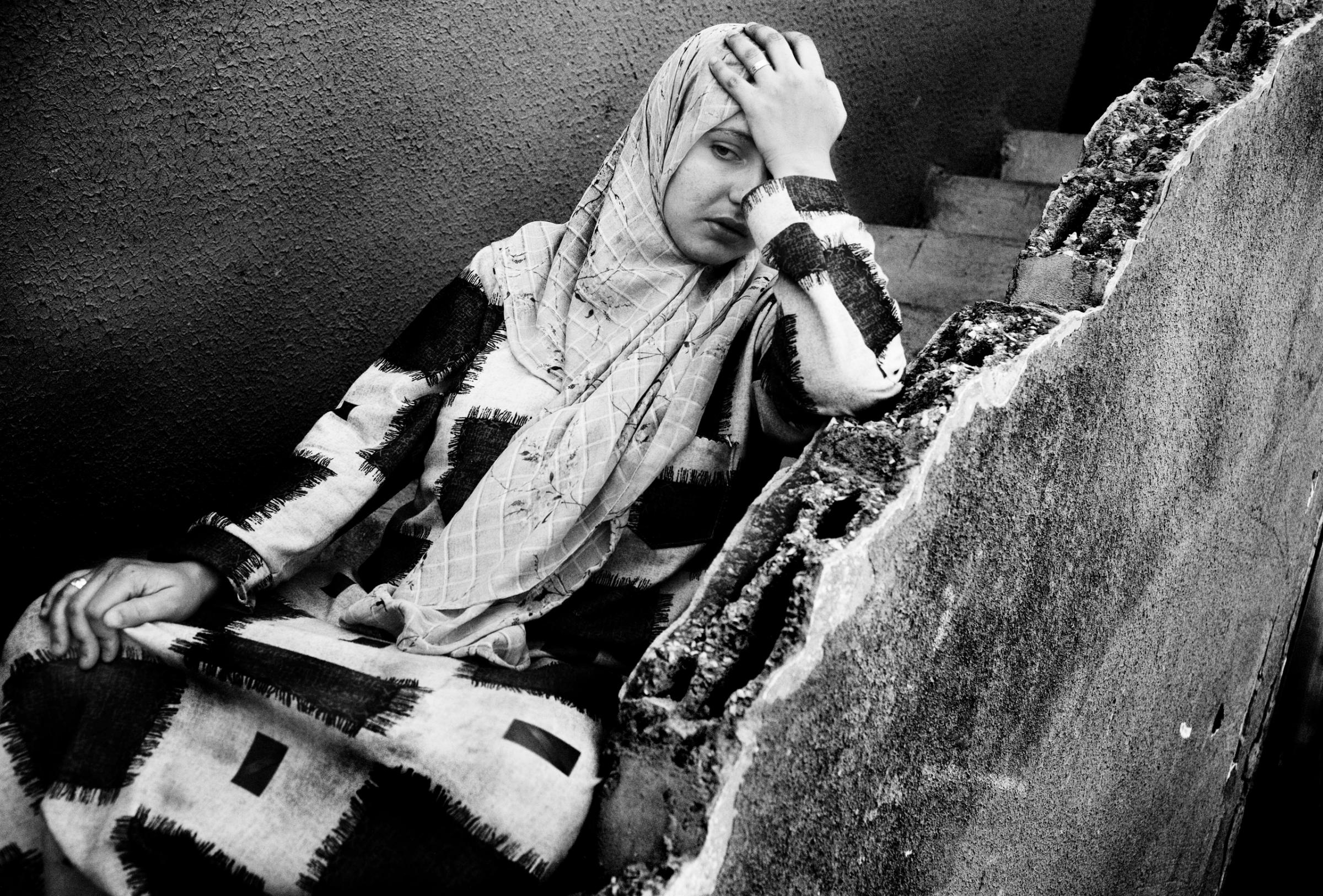
This was was my first conflict. I was 30 at the time and had visited Lebanon in 2004 and 2005. Because I knew people there, I felt the urge to cover this story. I arrived in Beirut at the beginning of the conflict and I travelled to Tyre, in the south of the country, with Paolo Pellegrin who guided me into the world of conflict journalism.
I have two distinct memories of the situation. My first impression was that in Tyre there was no front line. Soldiers did not face each other in combat. Israel was bombing the south of Lebanon from planes and neither the local population, nor the journalists, could anticipate when that would happen. After an explosion, there was smoke, and the reporters, mostly all together, scrambled to report what was happening. Journalists in conflict areas, I then discovered, tend to stick together, share information as much as possible, move in small groups, cover the same events, and in some cases take more or less the same pictures. I suspected, and I learned that this is what you are supposed to do.
I took this picture of a woman desperate to flee Ramesh, Lebanon at the border with Israel. The village was isolated for over a week or so, due to the Israeli bombings. The population was stuck in the village without water and food. When the news reached journalists, a large group decided to drive there despite the risk of being hit by an Israeli bomb on the road. Once we arrived, the situation was tense and surreal. The population was desperate to flee. The few locals with cars were offering rides out of the village for $100 per person. Journalists and photographers were running around to get the most poignant pictures, the best quote. We were pressed for time and had to leave to file the news and pictures. I must confess — I was excited, scared and shocked, all at the same time. Probably, this was less about the the real situation, and more about my being there. Ten years later, I still sometimes wonder what I was really doing there.
Jerome Sessini

I spent four weeks in Lebanon in 2006. I have bad memories of this trip. I was always late, always on the side of events, never in the right place. As a relatively young photographer, I was selfishly running after action and strong images — without ever reaching them. The culmination of this quest was the march towards Bint Jbeil, the besieged city that was copiously bombed by the Israeli Air Force. At 12 kilometers away, we could see and hear the F-16s dropping their bombs on the martyred city. No one could enter or leave. It was all that was needed to stimulate my imagination.
I decided to walk for 12 km with another photographer and a peaceful white sheet fixed to a stick. Surrounding us, was the invisible buzz of a drone. The first burst of Israeli artillery was falling quite far from us. In a field, the earth absorbed the explosion. We were less than 500 meters from the entrance of Bint Jbeil. I decided to continue. I saw silhouettes of buildings through smoke and dust from the explosions. I could see a portrait of Hassan Nasrallah, and a few trees. The second salvo of artillery fell close enough to us that stones and earth fell on our helmets. There was half a second of fear and hesitation. It was too late to run to the city center. The next salvo would be for us. We left in the opposite direction, defeated and disappointed. There was not even a picture. Frustrated, I was missing the essential: understanding and accuracy.
Thomas Dworzak
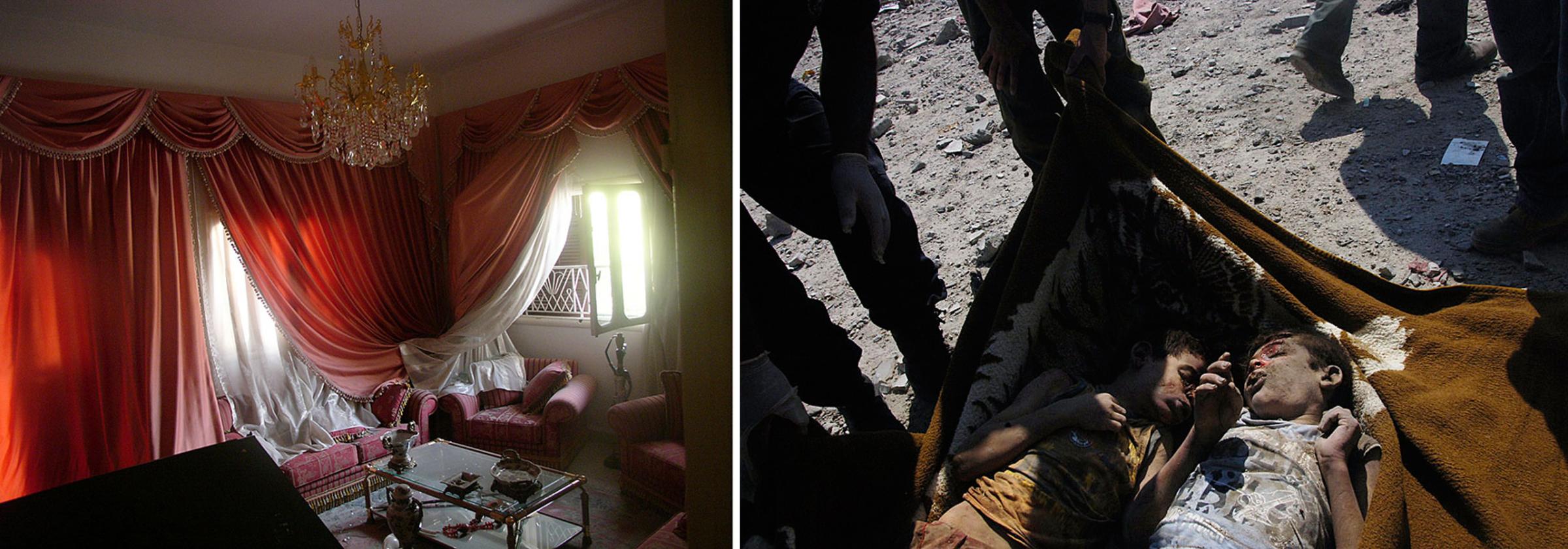
I remember the 2006 war in Lebanon as pretty much driving and wandering around a certain Mediterranean picturesque but empty normality, suddenly interrupted by the extreme brutality of the war.
The two pictures that stick in my mind are the red-lit family living room. A bomb had hit not far away, and had blown out the windows. The family was gone. The place was totally quiet and eery. And the other extreme: screaming, shouting, shoving. Lebanese forces had evacuated the dead from an Israeli air raid. And suddenly they carried out these two little boys, brothers? I don’t think more needs to be said.
Samantha Appleton
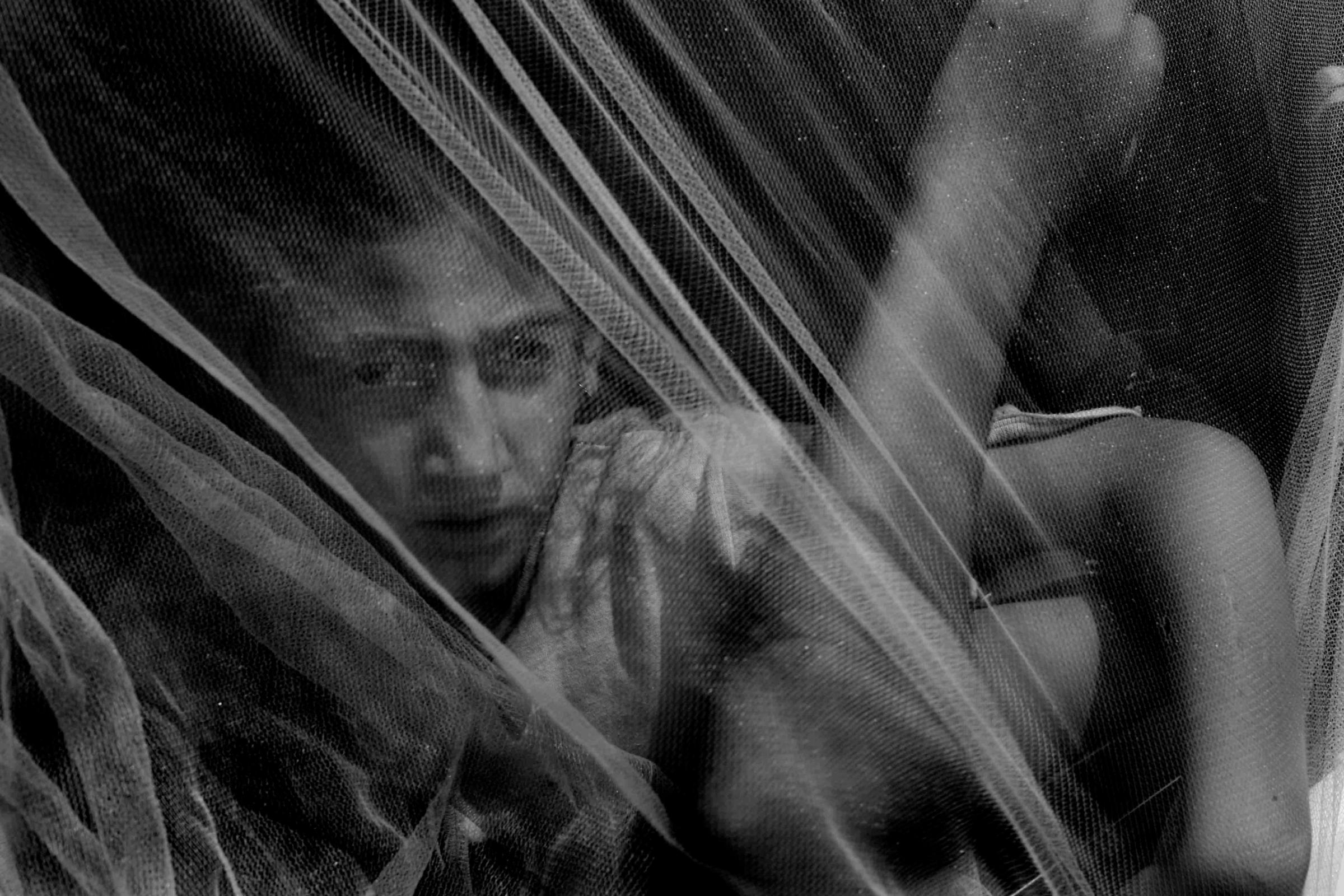
The most frantic time in a war zone is often when there is a lull in fighting. A scramble for resources, quick burial of the dead, and displaced people fleeing for safer refuge can create a chaotic scene where there was a ghost town of rubble just minutes before. Carloads of people, who had been cut off from all communication in the village of Bent Jbeil for days, as heavy fighting destroyed their village, were using such a lull to escape on July 27, 2006.
Visibly dehydrated children peered out of mosquito netting that covered the blown out windows of the car in which they fled. The driver slowed to ask New York Times journalist Anthony Shadid about what had been happening in the rest of Lebanon, and where they should go. I only had a beat or two to make this photograph before the car moved on. We didn’t have much to suggest to them. They were stuck, as the poor and less able-bodied often are in war. Those in power, those who fought, and even those who covered the war (of which there were many in 2006), all knew their roles at this point. The displaced people were extras in that play, being herded from one dark corner of war to another.
The momentary ceasefire was over as quickly as it started. Munitions rumbled up the valley, and the streets emptied again. I look back at this picture and shake my head at how I took for granted my ability to photograph the victims of conflict in the early 2000s. Many colleagues, including Shadid, have since died in the region as it has become prohibitively dangerous to cover. Although quick and largely forgotten, the 2006 war was at a critical crossroads of what had been happening in Iraq and Palestine, and what has since happened in Syria. It is nearly impossible to properly document conflict in the Middle East. There are millions of displaced, injured, and killed civilians that the world will never see.
Kadir van Lohuizen
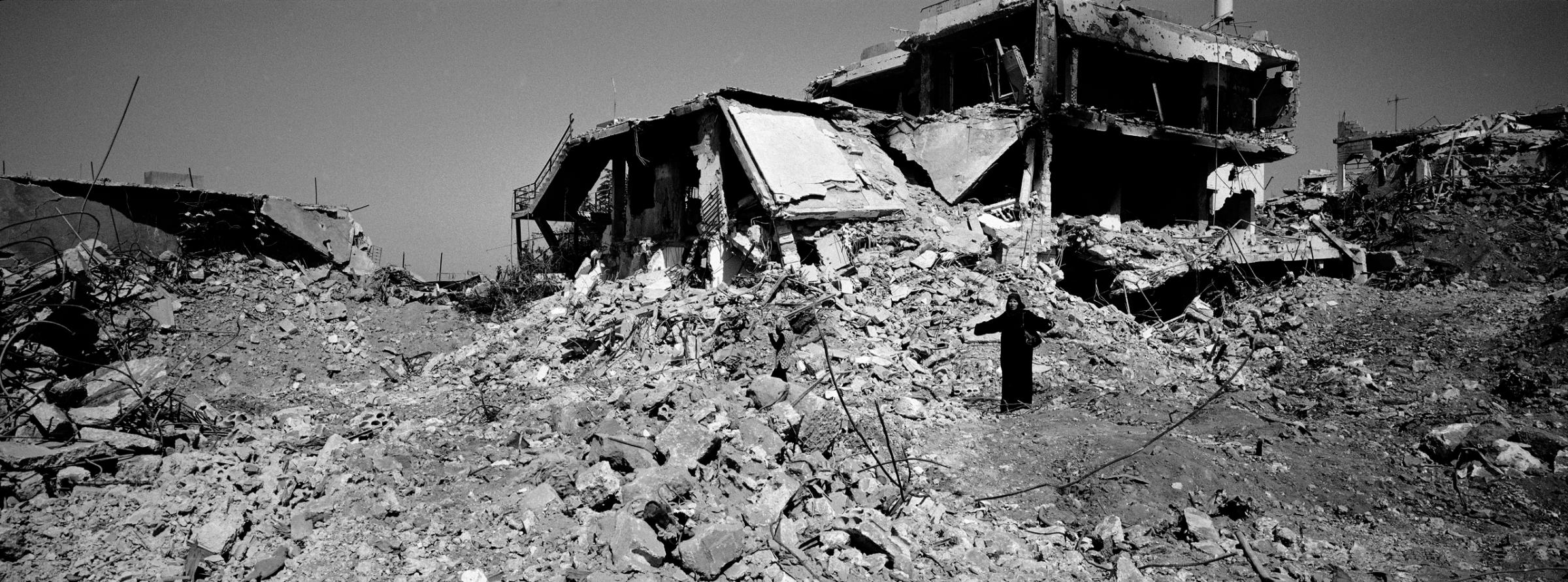
A woman stands in disbelief among the remains of where her house once stood in the village of Aita Chaab, southern Lebanon.
It was quite shocking to see how destructive this very short war was between Hezbollah and Israel. The village was first bombed, and then the Israeli army brought bulldozers to completely flatten it.
This was ten years ago. It is depressing how much the situation in the Middle East has deteriorated since then.
Farah Nosh
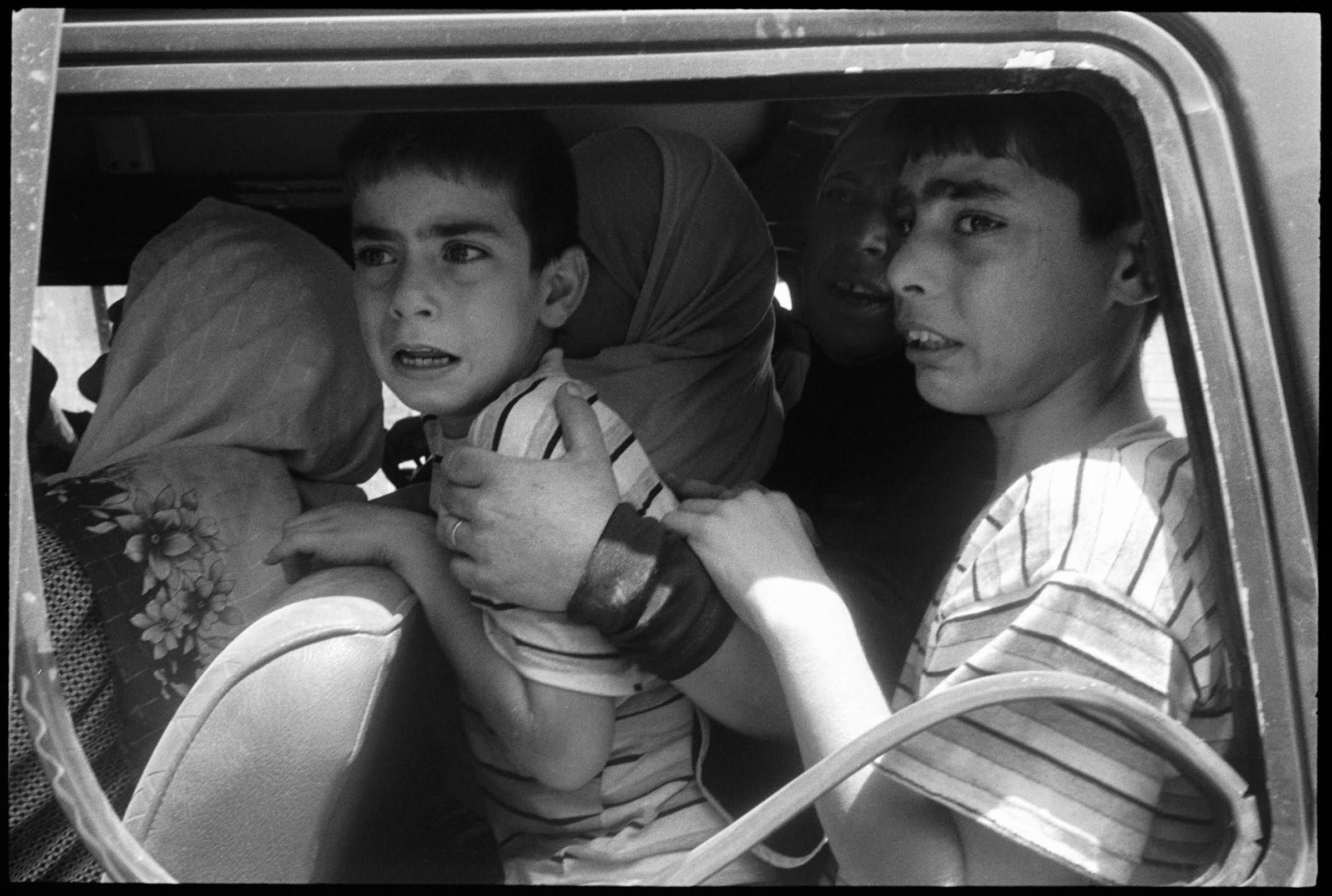
I’m a mother of two young boys now. I understand this photograph in a way that I wasn’t capable of when I took it.
We all took advantage of a temporary halt in Israeli air strikes in the middle of the war. Journalists were finally safer to drive around, and those trapped in bombarded villages were given an opportunity to escape. We entered Aitaroun and found people emerging out of a flattened village. It was a moment of chaos as people realized it was quiet and safe to flee. At the time, there were only enough vehicles to evacuate women and children. It was a moment of true fear, as these boys knew they were leaving their father behind.
Stephanie Sinclair
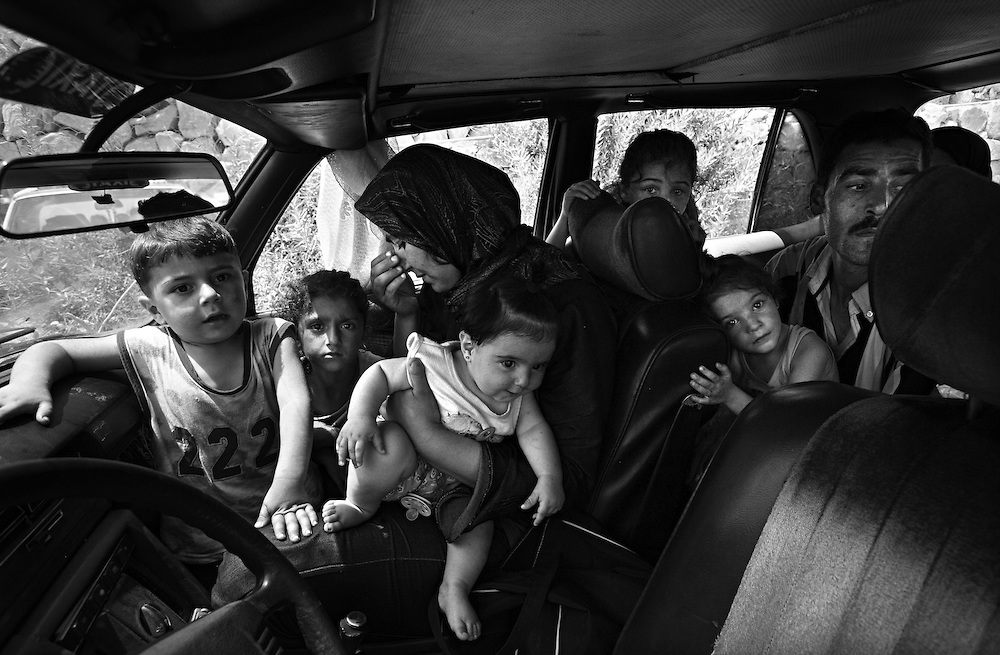
I made this photograph of families fleeing from the border towns of Lebanon through the very dangerous coastal road between Tyre and Sidon in 2006. Ten years later—and now having a little one of my own to keep safe—I feel even more acutely the stress and fear this mother must have felt when this photo was taken. I can’t imagine how agonizing a decision it must have been to make this dangerous trek, knowing armed drones flew above and were targeting suspicious cars on the road.
I wonder what those children remember of that war, now that they are all teenagers or older, maybe some with children of their own? Did they all survive the war? How was their education affected? Were any of them radicalized?
I spent most of my years in conflict zones focusing on civilians caught in the middle, trying to protect their families. With many of the wars of the past 15 years having no clear frontlines, and thus a sustained and increased sense of fear and vulnerability, it’s no wonder the region remains unstable.
Shaul Schwarz
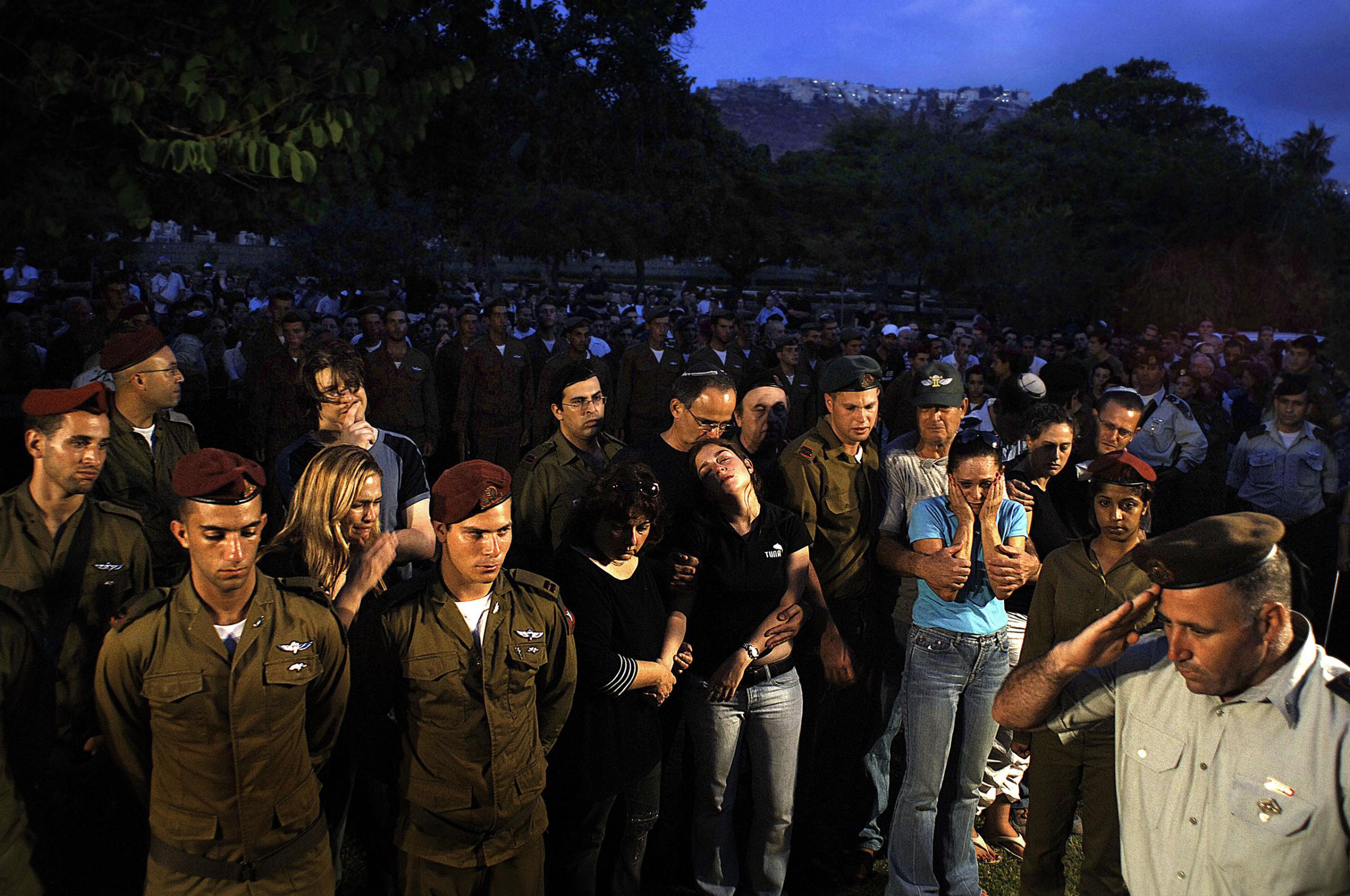
When the Israel-Lebanon war started, I was an Israeli photographer living in New York. Many people thought this would be another news story that would go away in a few days, but when my friends and family called from Israel and said they had been drafted, it was not only personal, but it was also the moment I knew it was time to go home and cover this war.
This was a time when social media wasn’t pervasive and the immediacy of pictures getting to mass populations around the world existed through print magazines and newspapers, more than through internet channels. In the Middle East, wars go from zero to a hundred faster than anywhere in the world. This war became proof of that. While most people will remember the devastation in Lebanon, I remember Israel being bombarded like I had never seen before. I remember the daily deaths, the constant bombing, and the endless numbers of soldiers walking past the border north into the ugliness of war. It wasn’t long before those same soldiers would return in body bags, at least a few each day. Funerals became a daily routine. Often, they would be interrupted by sirens announcing incoming artillery. As the war continued, we photographed funerals less, as they had become old news, and a too “easy, sure thing” picture.
Looking at the grief in the eyes of the family of Israeli paratrooper Yiftach Shrayer was one of the pictures I took on assignment for TIME in the blood bath of 2006. It may have been 10 years ago, but I can remember it vividly like it was yesterday.
Looking back, I am reminded that it is the personal loss for individuals on both sides that will never heal. It is a stark reminder that we should never accept war, and as photographers we should never stop taking these pictures. Perhaps, they will remind us of the grave price we all pay.
Lynsey Addario

The 2006 war between Israel and Lebanon proved one of the only times in my career when I have covered both sides of a war, across sovereign borders. Frontlines, visas, security, suspicion, broken infrastructure and travel bans generally make it extremely difficult for a journalist to cover two nations at war within the span of a few weeks.
I was in Angola when the fighting began, and by the time I made my way to the region, I was assigned to northern Israel for the New York Times. A few weeks later, I was sent to Lebanon to cover the ceasefire. The first image is of Israeli troops loading artillery, and firing their tanks into Lebanon in retaliation for Hezbollah rockets streaming into civilian areas across Israel. The second image is from south Beirut, as families made their way through the decimated southern suburbs of Hezbollah territory.
Bruno Stevens
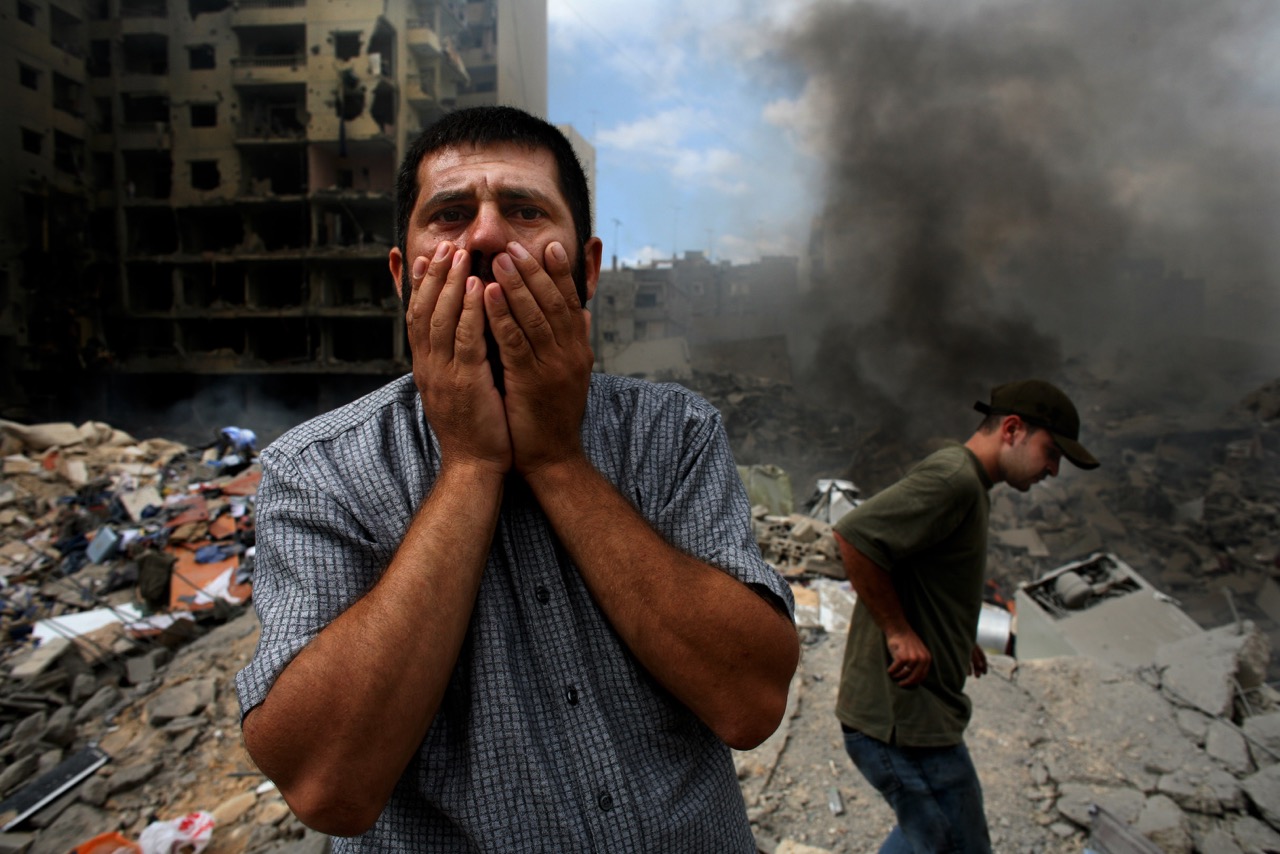
I took this picture 5 or 10 minutes after the bombing in a neighborhood in southern Beirut. I got to the site immediately with the Red Cross and there was nothing to be found. It was August 13, at the very end of the war. There was no reason for the Israeili Air Force to bomb that place. I assume that people from Hezbollah were living there. They leveled 11 big buildings, including a school. There were many casualties, and it was was a very big shock. This was basically a war fought against a non-threatening country that was laid to rubble. It was for the benefit of the right wing Israeli policy to dominate. It’s a cycle for no other reason than to consolidate the system that is in place.
Patrick Baz
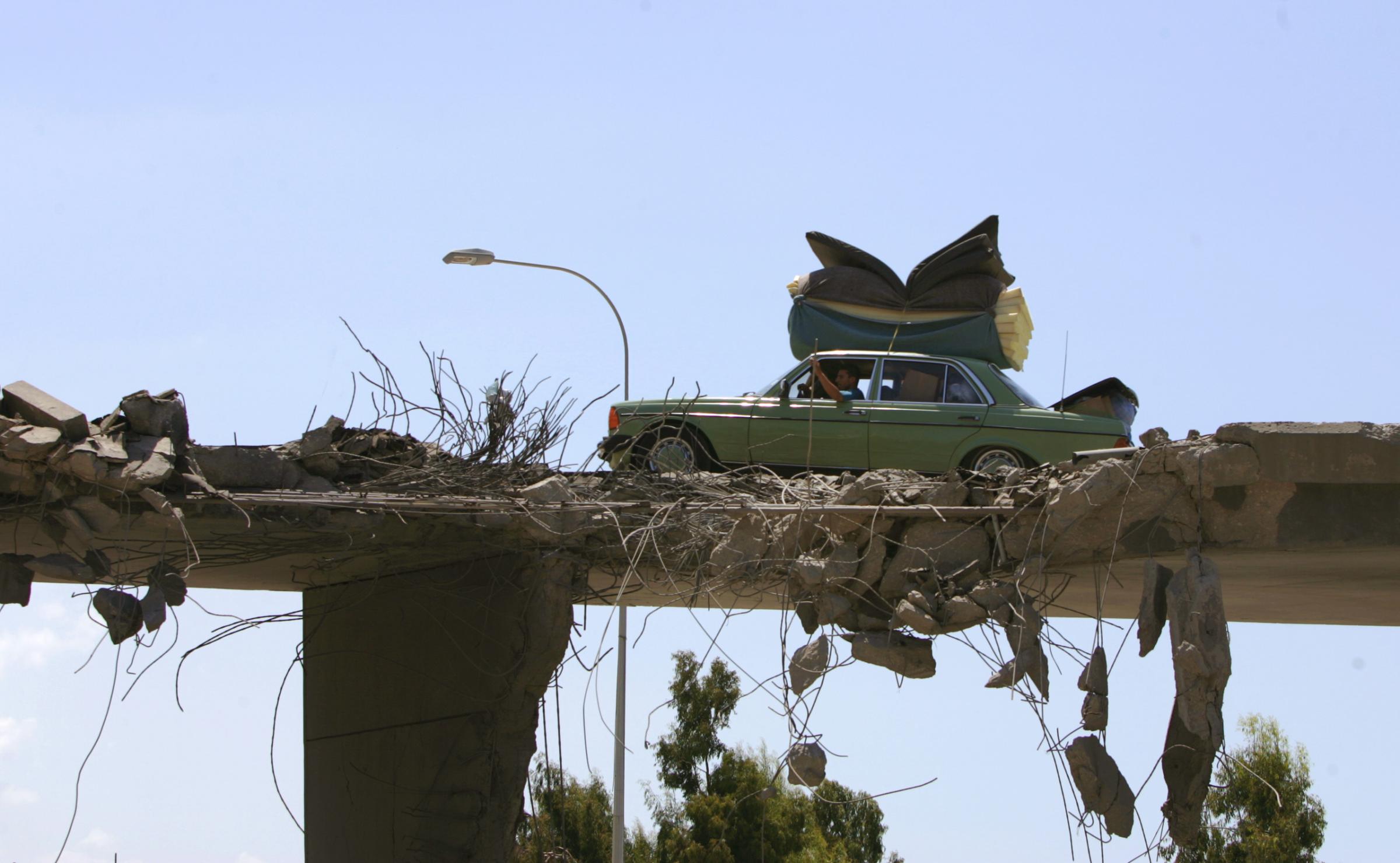
It was the summer of 2006. The war between Israel and the Hezbollah had ceased, leaving ruins, destruction and death. Lots of families had been displaced. Their towns, villages and homes were turned into ruins. Despite the truce and an Israeli ban on vehicles in the southern part of the country, some had decided to take the road back to a place they called home.
It was very difficult for me to take pictures of another war in my own country. I wanted to show the absurdity of war and the resilience of the people. I feel like we live in a doomed region where war will never end.
Oded Balilty
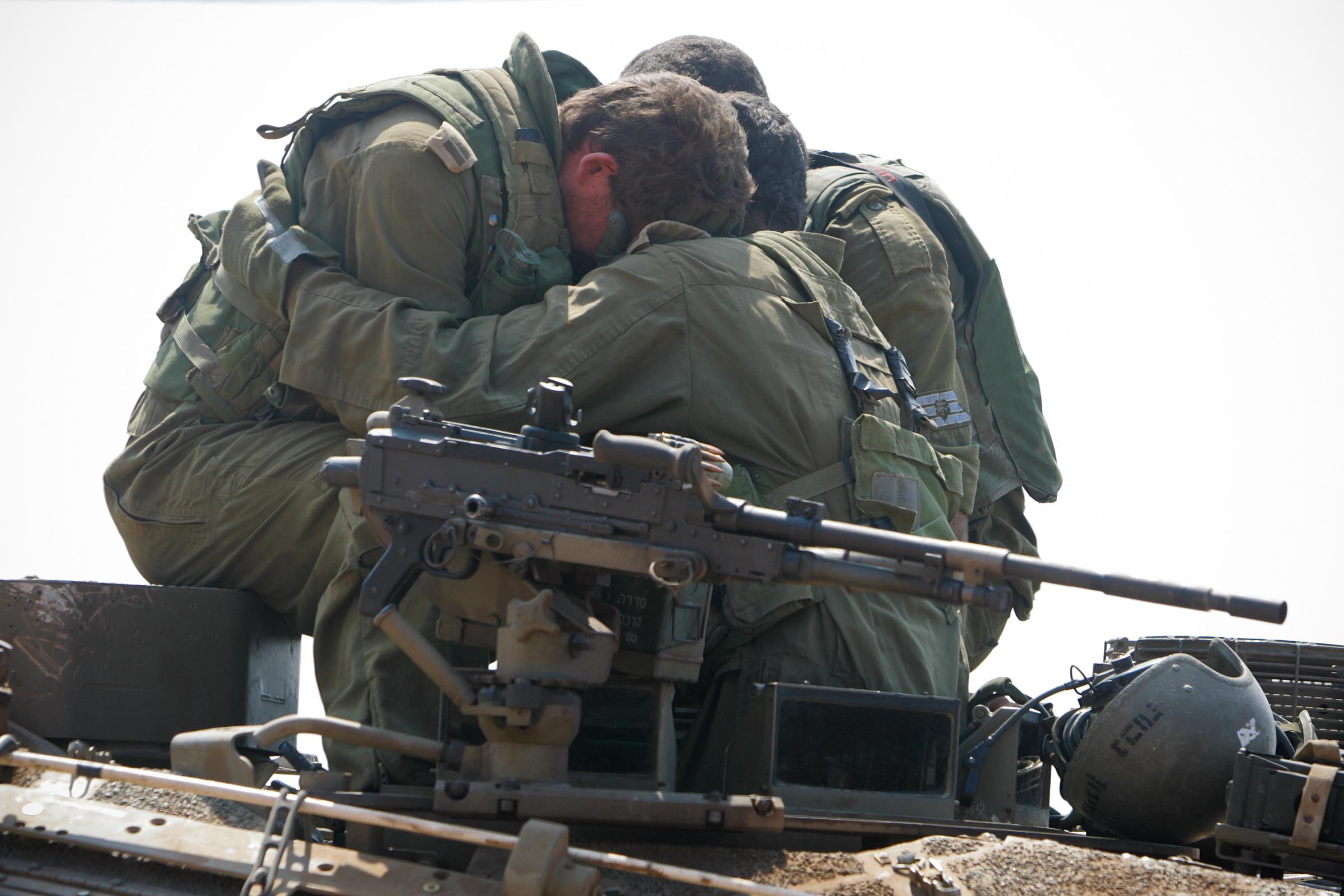
I don’t think this is my best image from the 2006 Israel Lebanon war, but for sure it is the moment I remember the most. The Israeli soldiers had just returned from south Lebanon carrying the bodies of their friends inside the APC. I usually remember quiet, emotional moments more than the actual battle on the front line. It goes deeper when it’s quiet, and the fact we don’t see the faces of the soldiers allows the photograph to become general; it’s not a personal story.
Alice Gabriner is TIME’s International Photo Editor.
More Must-Reads from TIME
- Cybersecurity Experts Are Sounding the Alarm on DOGE
- Meet the 2025 Women of the Year
- The Harsh Truth About Disability Inclusion
- Why Do More Young Adults Have Cancer?
- Colman Domingo Leads With Radical Love
- How to Get Better at Doing Things Alone
- Michelle Zauner Stares Down the Darkness
Contact us at letters@time.com